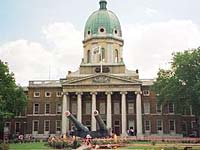
Home Page Project ListingsProject OverviewBackground / ContextLearning ResourcesUseful Links |
Walton High School - Imperial War
|
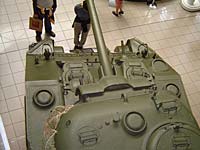 |
| A WW2 Tank in the large exhibits area |
In the free time we had many of us visited the large exhibits area. There were many things to look at, such as V1 and V2 rockets, tanks, AA-guns, telescopes, observation balloons and Spitfires, even part of a Lancaster bomber. Teachers were on hand to help us make sense of the exhibits and fit them into what we already knew.
We also visited the Great Escapes exhibit. In this exhibit it shows you how the prisoners tried to escape. In the exhibit was a recreation of a tunnel that was used in the camp featured in the film ‘The Great Escape’. This was next to a ‘hands-on’ exhibit where you could feel the weight of the soil that the prisoners dispersed around the site as a result of the tunnelling. The pows who did this were nicknamed ‘penguins’ because of the walk they had to adopt to disperse the soil without being noticed. The exhibit also had stories that show what life in the camps was like. We were fortunate enough to meet a former pow who was in the ‘Great Escape’ camp. To meet a ‘living link’ with the exhibits was amazing. He told us that whilst there was not a lot of harsh treatment of the prisoners, it was clear who was in charge.
We also visited the D-Day exhibit. This explains the events surrounding June 6th 1944. It shows you the preparations (such as new inventions to clear the beaches of mines) and the invasion itself. It also helps to explain why the Germans had no idea where the Allies were going to land (after the invasion they were still expecting another larger invasion from Calais.)
Overall the experience of the day was one that gave us a real understanding of events of World War Two. It was clear that people had pulled together to stop the Nazis.
Outcomes
Whilst at the Imperial War Museum and during the follow up project I felt that our group learnt a great deal. Perhaps the greatest achievement was that a lot of people realised the enormous commitment made by the people at the time. Not only those that fought in the war but also the people that aided them on the home front through contributions such as joining the ‘land army’ or working in factories, which helped by sending supplies and equipment to battle fields.
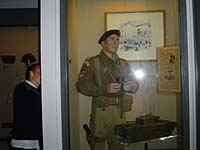 |
Another thing we were made more aware of was the realisation of why so many men and woman were prepared to fight against Hitler and not give in even when Britain was in ‘her darkest hour.’ This was because people knew some of the horrors that Hitler would inflict upon the people that did not fit into his idea of a ‘master race’. This included people’s elderly relatives or disabled friends who would be sent away or even killed. Despite this people did not know the true horrors that were at Auschwitz and other concentration camps. There was an exhibit in the museum about this which really showed what it was like and why it should never happen again. I also think that people realised that war can be very horrific and affect lots of people in lots of different ways, and that war should be avoided wherever possible so people do not commit these sort of crimes again or so many people die needlessly.
People who visited the museum achieved a better knowledge of World War Two. Specifically the following areas: ‘Great Escapes’- This was an exhibit which showed how things were smuggled into camps and what it was like for people to escape. There was also the ‘Children’s War’ exhibit about life on the home front, and the D Day exhibit which was about Allied preparations such as gathering troops and equipment and leading the Germans to believe that the Allies would attack elsewhere, (and the German preparations such as Rommel’s Atlantic Wall.) The exhibit also covered the landings themselves.
As well as the people who went to the Imperial War Museum other people will gain something from the visit. This is because the ‘follow up’ work to the visit is a large display in Walton about the different exhibits we visited and a display on V.E Day. From this, and articles on the school website, people will learn something about World War Two and the celebrations at the end of the war and perhaps understand the commitment made by so many young men and woman who were willing to serve their country in its hour of need what ever the cost.
‘If Britain and her Commonwealth last for a thousand years, men will still say this was her finest hour.’
Sir Winston Churchill 1941.
Additional Information
Below are some photos of the display produced in school.
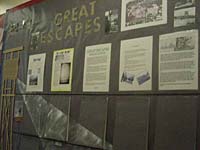
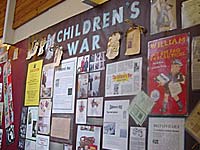
Further photos can be seen in the gallery section of the school website: www.waltonstaffs.com
(Go to the gallery, open up departments, then history & look at history display)
